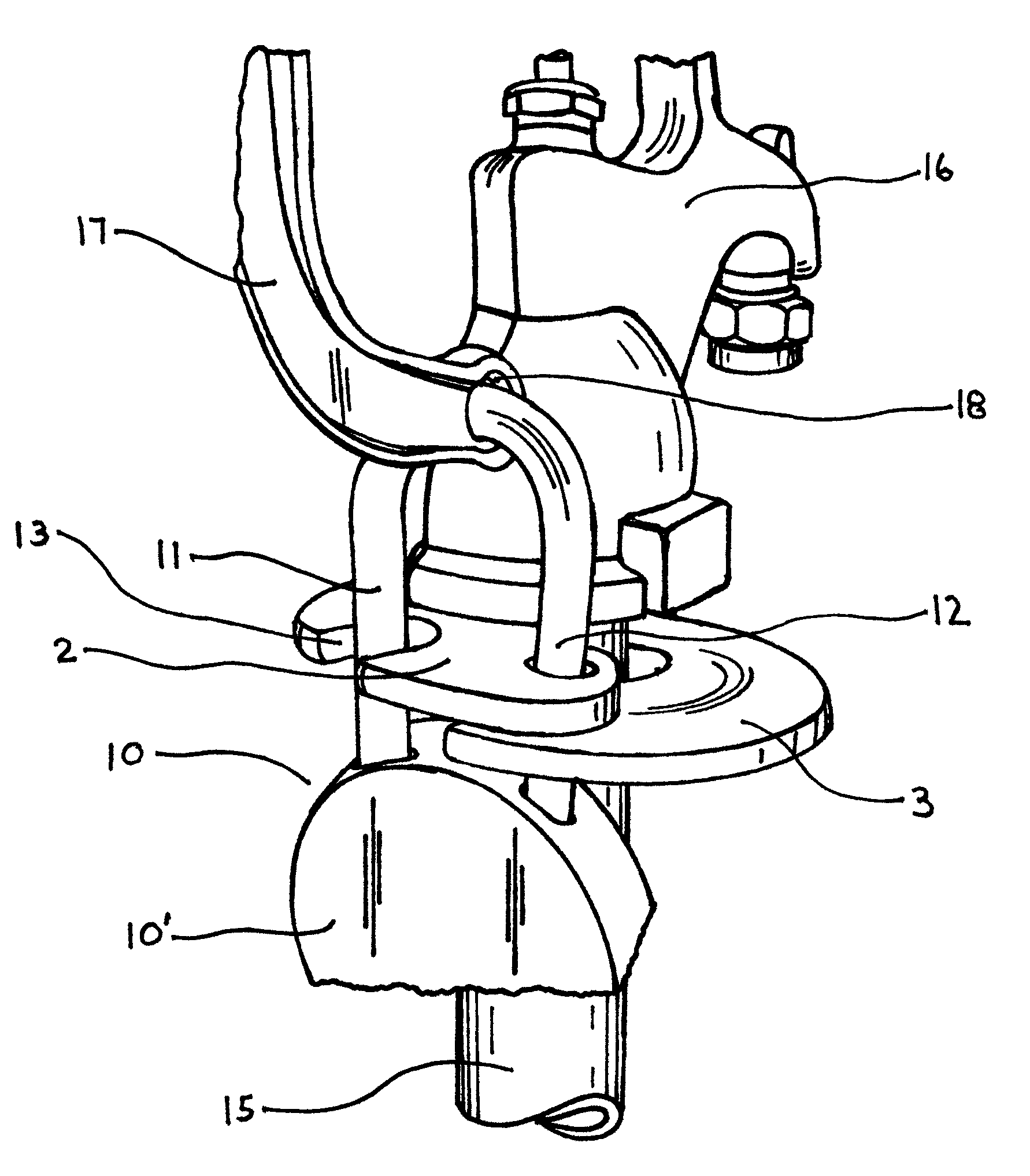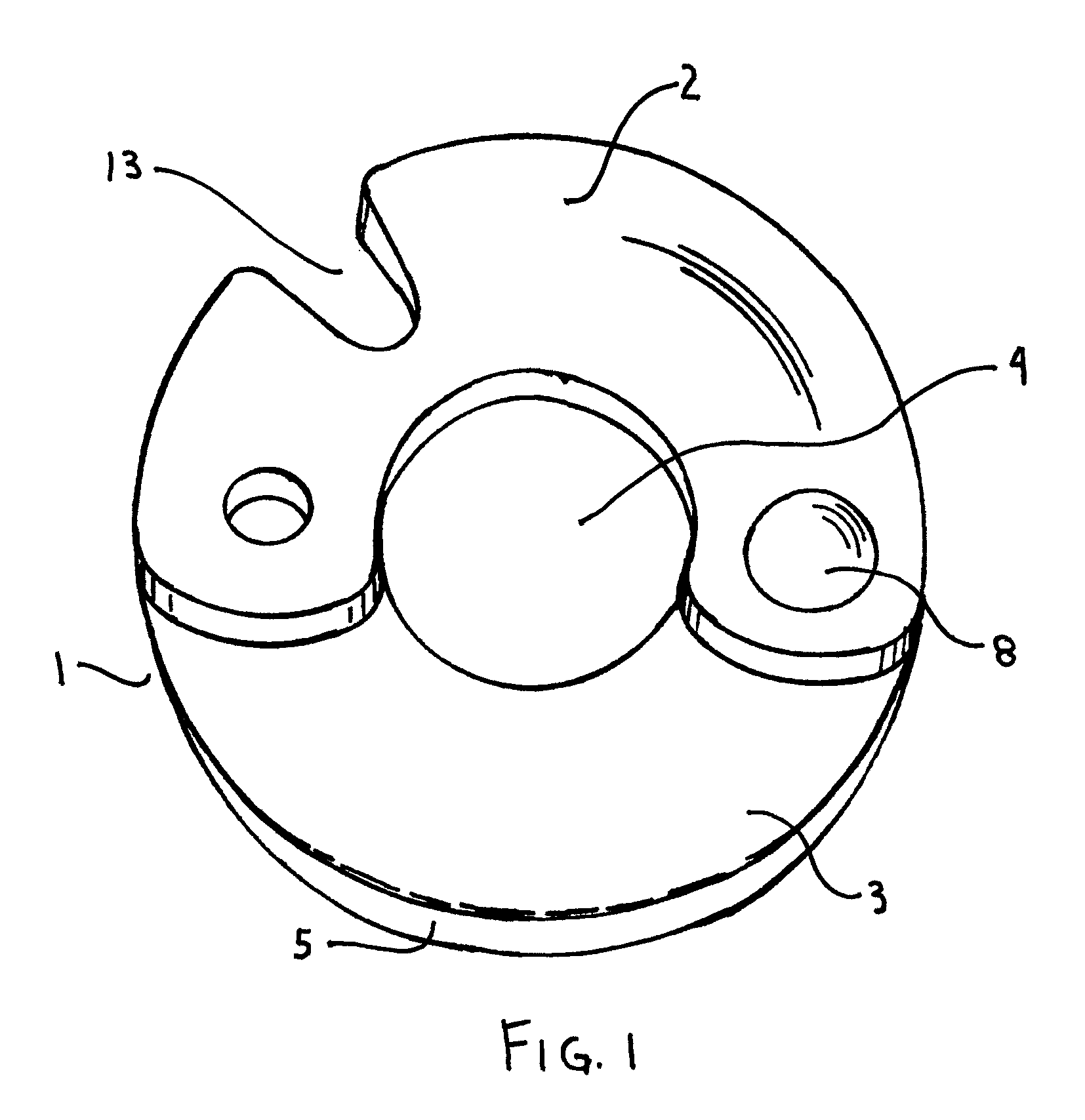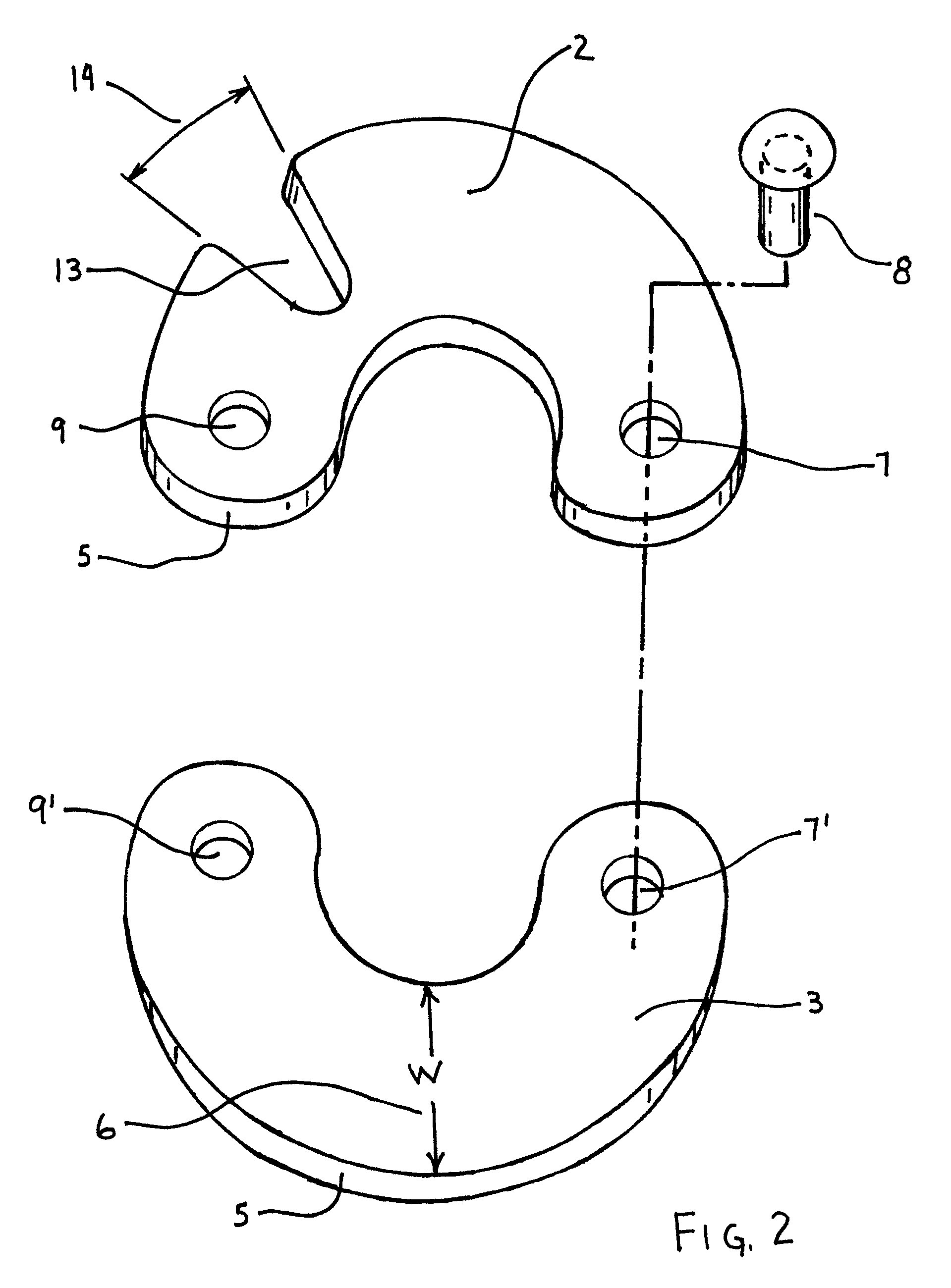Yard hydrant locking collar
a technology for locking collars and hydrants, which is applied in the direction of keyhole guards, mechanical control devices, instruments, etc., can solve the problems of easy cutting of the inability to easily cut seven-sixteenths hardened steel locks, and the chain used to complete the prior art locking mechanism is quite vulnerable to defeat by simple bolt cutters or hacksaws
- Summary
- Abstract
- Description
- Claims
- Application Information
AI Technical Summary
Benefits of technology
Problems solved by technology
Method used
Image
Examples
Embodiment Construction
[0015]A yard hydrant locking device 1 comprises two essentially C-shaped crescents sections or plates. Top 2 and bottom 3 C-shaped crescents each have an essentially semi-circular outer perimeter and an essentially semi-circular inner perimeter as best shown on FIGS. 1 and 2. The upper 2 and lower 3 crescents pivot about the pivot pin 8 to form an inner hydrant pipe receiving hole 4 when the top and bottom crescents are closed and locked.
[0016]The diameter of the inner hydrant pipe hole 4 is approximately one and three-fourths inches in the preferred embodiment and is designed to receive hydrant pipes of that dimension. The inner hydrant pipe hole 4 can vary to accommodate other sized pipes while still keeping within the spirit and disclosure of this invention. The upper 2 and lower 3 crescent shaped plates have a width W, shown as number 6 on Drawing FIG. 2. The radius of pipe hole 4 is approximately seven-eighths inches. The total diameter of the connected plates from the center i...
PUM
 Login to View More
Login to View More Abstract
Description
Claims
Application Information
 Login to View More
Login to View More - R&D
- Intellectual Property
- Life Sciences
- Materials
- Tech Scout
- Unparalleled Data Quality
- Higher Quality Content
- 60% Fewer Hallucinations
Browse by: Latest US Patents, China's latest patents, Technical Efficacy Thesaurus, Application Domain, Technology Topic, Popular Technical Reports.
© 2025 PatSnap. All rights reserved.Legal|Privacy policy|Modern Slavery Act Transparency Statement|Sitemap|About US| Contact US: help@patsnap.com



